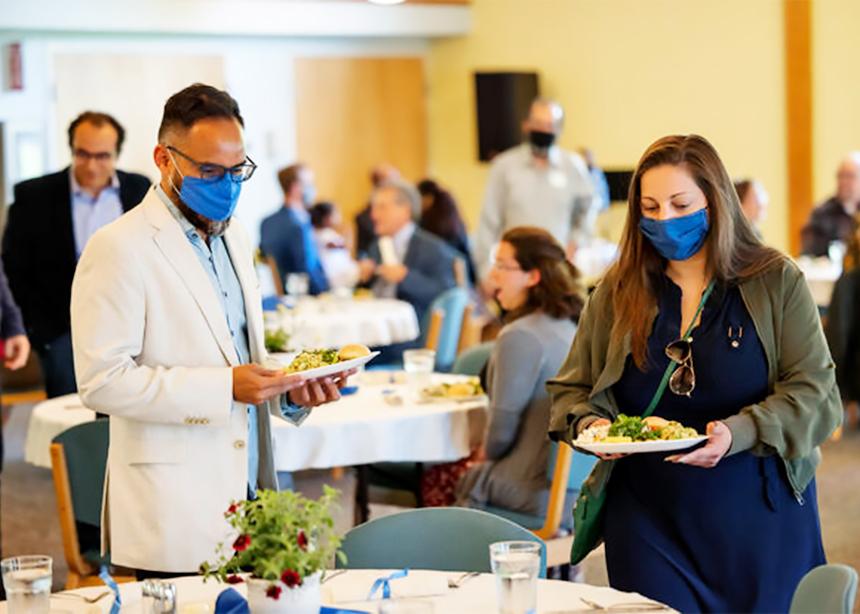Each year in the Christian worship: Theory and practice class at Anabaptist Mennonite Biblical Seminary, students spend a couple of weeks considering rituals.
“Classic” rituals like baptism, communion, weddings and funerals, while important, don’t exhaust the need for ritual action, so students are asked to create new rituals that emerge at the intersection of a biblical text and powerful emotions. These could be either negative events, painful feelings, or disturbing experiences that are lingering in the shadows and need release; or positive events, exciting feelings, or energizing experiences that need acknowledgment, blessing, and empowerment.
Sometimes new rituals are used only once; sometimes they have a resonance that invites a repetition several times or a sharing of them with others.
As part of their work in this year’s class, students created new rituals for a variety of situations:
- Speaking a lament during a counselling session.
- Remembering family members who had died in the last year.
- Naming and releasing fears.
- Reconciling after congregational conflict.
- Regathering in a particular church building.
- Welcoming all to worship in a diverse gathering.
Two rituals that students created were both general (not tied to a particular community) and specific to this moment (for them) in the COVID-19 pandemic: eating indoors with people from other households for the first time since the pandemic began, and reopening a building shuttered since the beginning of the pandemic.
AMBS is sharing these for wider use, recognizing that, depending on different contexts, people may not yet be ready for these rituals or may have passed the time when they needed them:
- Eating together again, based on Luke 24:13-35 and written by Lisa Heinrichs, a student from Hope, B.C. (https://bit.ly/3f45rvI).
- Flower planting to mark the reopening of a building after COVID-19, based on Luke 24:1-12 and written by Alaina Dobkowski, a student from Grand Rapids, Mich. (https://bit.ly/3oJ0ETx).
AMBS asks those using the two new rituals to give credit to the authors.



Add new comment
Canadian Mennonite invites comments and encourages constructive discussion about our content. Actual full names (first and last) are required. Comments are moderated and may be edited. They will not appear online until approved and will be posted during business hours. Some comments may be reproduced in print.